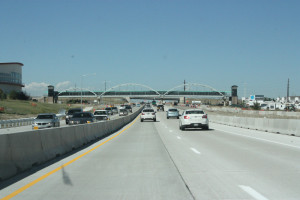It is sad to see that the notion of “excessive commutes” is still around. This is the idea that, if we all lived close to our work, we could drive less and all be happier.
I tried to demolish this myth fourteen years ago in my book The Vanishing Automobile and Other Urban Myths, but now Daniel Schleith, a geographer from the University of Cincinnati, is bringing it back. Schleith calculated the “minimum commute” that would be required in the nation’s 25 largest urban areas if jobs and housing in those areas were “balanced,” and compared that with the actual average commutes in those areas. The difference between the two is the “excess commute.”
![]() This method makes two related and equally fallacious assumptions: First, that the only purpose of transportation is to get to and from work, and second that the only factor that should be involved in choosing a home location is proximity to work. In fact, commuting makes up only less than 20 percent of our travel, and the other travel we do is only one of the many factors that might lead us to choose a home location that isn’t as close as possible to work.
This method makes two related and equally fallacious assumptions: First, that the only purpose of transportation is to get to and from work, and second that the only factor that should be involved in choosing a home location is proximity to work. In fact, commuting makes up only less than 20 percent of our travel, and the other travel we do is only one of the many factors that might lead us to choose a home location that isn’t as close as possible to work.
Excess commuting first became an issue back in the 1980s when computers first became powerful enough to build crude models of an urban economy. The first models, which assumed that proximity to work was the only factor involved in home location, estimated that the average commute should be about one mile. In reality, it was seven miles.
Economists looked at these results and said, “There’s something wrong with our models. Maybe proximity to work isn’t the only factor in choosing home locations.”
Urban planners looked at these results and said, “There’s something wrong with our cities. We need to reconfigure them to balance jobs and housing so people won’t have to drive so far.”
“In urban planning,” observed Yale political scientist James Scott in his book, Seeing Like a State, “it is a short step from parsimonious assumptions to the practice of shaping the environment so that it satisfies the simplifications required by the formula.” Unfortunately, too many cities have taken that short step and greatly interfered in peoples’ lives to try to shorten commutes.
There are several reasons why it is pointless to worry about excess commuting. First, most people compartmentalize their lives by keeping their homes and work separate. Surveys by Patricia Mohktarian of the University of California have found that people’s preferences are for average commutes of 15 to 20 minutes, which is only a little less than actual average commutes. Moreover, Mohktarian found, rather than view commuting as a chore, many found it entertaining.
Second, even if people wanted to live closer to work, they also want to live close to good schools, close to the kinds of shops they prefer to patronize, close to their spouse’s work, and close to other social and recreational opportunities. Proximity to work is only one, and probably not the most important, factor in choosing a home location.
As a result, even if jobs and housing were “balanced” (that is, the number of jobs equaled the number of workers in each community), people would continue to have “excess commutes” simply because most people wouldn’t live in the same communities as their jobs. Robert Cervero’s analysis of cities in the San Francisco Bay Area found that many “are nearly perfectly balanced, yet fewer than a third of their workers reside locally, and even smaller shares of residents work locally.”
Instead of worrying about where people live and how they travel, city planners, geographers, engineers, and economists should do their best to make what travel people want to do as safe and uncongested as possible. Sadly, that will require a revolution in the urban planning profession.
Randal O’Toole is transportation policy center director at the Independence Institute, a free market think tank in Denver. A version of this originally appeared in his blog, The Antiplanner.


